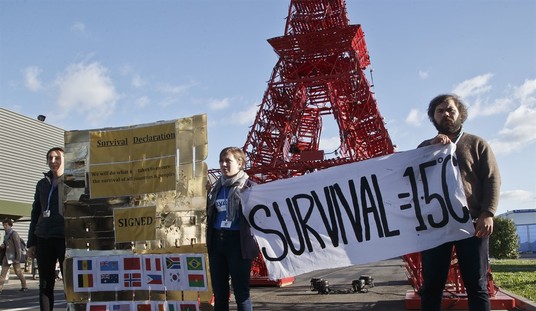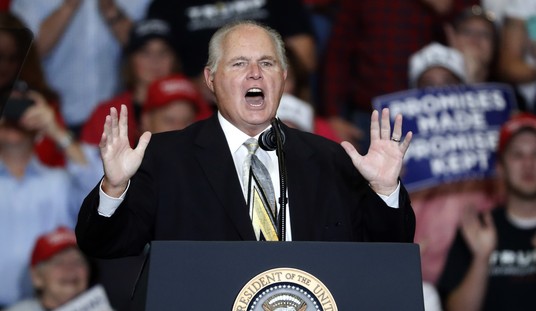For centuries, the economic center of gravity followed Horace Greeley’s advice and went West. Slowly but steadily, it marched out of the Middle East, through Vienna, Paris, London and even New York.
But today the economic action isn’t in Chicago, or L.A., or even Honolulu. It’s gone so far west, it’s back in the East. Asia is where the growth is, and everyone wants to know why. Author Joe Studwell has an answer, and a warning.
Studwell is a journalist who’s lived and worked in Asia for decades. His most recent book, How Asia Works, aims to divulge the recipe for that continent’s economic success. And, of course, it’s important to note that Asia isn’t uniformly successful; it hosts its fair share of failing economic states. Studwell also explains why that’s the case.
“There are three critical interventions that governments can use to speed up economic development,” Studwell writes in his introduction. These could be boiled down into three Fs: farming, factories and finance.
“The first intervention — and the most overlooked — is to maximize output from agriculture, which employs the vast majority of people in poor countries,” Studwell writes. First, he explains what doesn’t work: collectivization. China, North Korea and Vietnam all went down that road after World War II, and it only led to starvation.
Meanwhile, Japan, South Korea and Taiwan went in a different direction. They tried to break up collective farms and put more land in individual owners’ hands. “It was this that led to prolonged rural booms that catalyzed overall economic transformation,” he writes. Agriculture is an important first step because it tends to be labor intensive. That gives people something to do.
And when they’re owners, it gives them a chance to build wealth. Think Little House on the Prairie, with its individual homesteaders making a go of it on their own plots instead of Downton Abbey, with everyone working for the lord of the manor. “The techniques that maximize output in a backyard garden of a hundred square meters are also broadly those that will maximize yields on a small family farm of 10,000 square meters,” Studwell observes. But only a landowner is willing to put in the backbreaking labor needed to actually maximize those outputs.
Of course, when the family does put in the work, it tends to earn more income. This begins to open doors to any children on the farm. Yes, the children now can be educated. But Studwell doesn’t point at the schoolhouse door. Instead, he aims for the factory floor.
South Korea and Taiwan both exploded economically “with educational capital that was well below average,” he writes. “Literacy in South Korea in 1950 was lower than in contemporary Ethiopia.” Moving to a city to work in a factory creates new opportunities. “Even though the service sectors have come to dominate the economies of rich countries, manufacturing remains critical to the rapid economic transformation of poor countries,” Studwell writes.
Manufacturing allows workers to build wealth and skills. And it opens avenues to trade. “For states that want to get into the developmental fast lane, the global market in manufactures is the natural conduit for a quick technological learning process,” Studwell writes. And when it’s handled correctly, exports provide crucial discipline.
Studwell supports government subsidies for product makers, but only as long as the makers continuously expose their products to export markets. Only products that are good enough to be sold overseas, he writes, deserve government support.
For example, he writes about the difference between South Korea’s auto manufacturers and Malaysia’s. Korean companies were forced to export their products to Britain and the U.S., where they faced constant pressure from consumers and regulators. Korean cars started out as clunkers, but quickly scaled up to become excellent, super-safe automobiles, because that’s what the foreign markets required.
Malaysian cars, meanwhile, were made for the domestic market and heavily subsidized, so they didn’t have to meet safety or quality standards overseas. Despite heavy government investment, Malaysia’s cars never got better or safer. As a result, the country is a non-player in the global market, where Korea is a growing force.
It’s not about “picking winners,” Studwell writes, but about empowering companies to win. “In Japan, Korea, Taiwan and China, the state did not so much pick winners as weed out losers.” Or, even better, empower foreign markets to weed them out.
Finally comes finance.
Here Studwell doesn’t offer a roadmap as much as a caution flag: Don’t move too quickly, and make certain the financial system supports manufacturing and exporting. “Japan, Korea and Taiwan each experienced financial crises when liberating. But what was more important was that these states resisted pressure from the Washington Consensus and held off liberation until very substantial developmental progress had occurred,” he writes.
Studwell spends the book lauding South Korea, Japan and Taiwan as massive success stories. And he warns against the Philippines and Malaysia as failures. But the big question doesn’t arrive until his final chapter: What of China?
First, the Chinese finally took Studwell’s advice about farming. “After starving to death 30 million mostly rural dwellers as a result of collectivization” under the misnamed Great Leap Forward, China began producing more food “simply by letting poor people garden,” he writes.
The country’s move to manufacturing was a bit more difficult. But by imposing competition, China’s leaders forced companies to become more efficient. Bosses are now often paid for hitting profit targets. Meanwhile, in finance, “the biggest enforcer of export discipline on public sector manufacturers is China Development Bank, China’s main investment bank.” It supports deals in south-east Asia, Africa, Latin America and Russia. That, Studwell says, has rapidly increased the quality of China’s output.
Can the Chinese keep it up? “Most of the 155,000 enterprises still owned by the central and local governments,” the Economist recently warned, “are businesses that have little to do with the country’s economic or political priorities, and they have had a run of bad years.” The magazine hints that massive changes may be coming in those sectors. So the answer seems to be a version of Zhou Enlai’s famed comment: It’s too soon to say.
Studwell concludes there are two types of economics: the economics of development, where people develop the skills they need to compete globally. That’s where most of Asia has been since World War II. There’s also the economics of efficiency, where a mature economy requires less state intervention, freer markets and a focus on near-term profits. That’s where the U.S., and most of the rest, have been during those years. And it’s where South Korea, Japan and Taiwan are today, because of their successes in recent decades.
“The question is where these stages meet,” Studwell writes. But it would seem he’s already answered that: They meet in Asia, the world’s most dynamic region. And, if Studwell’s diagnosis is accurate, that dynamism is likely to keep moving the economic center of the world Eastward throughout the 21st century.
*****
image illustration via shutterstock / Sean Pavone / Zhax












Join the conversation as a VIP Member